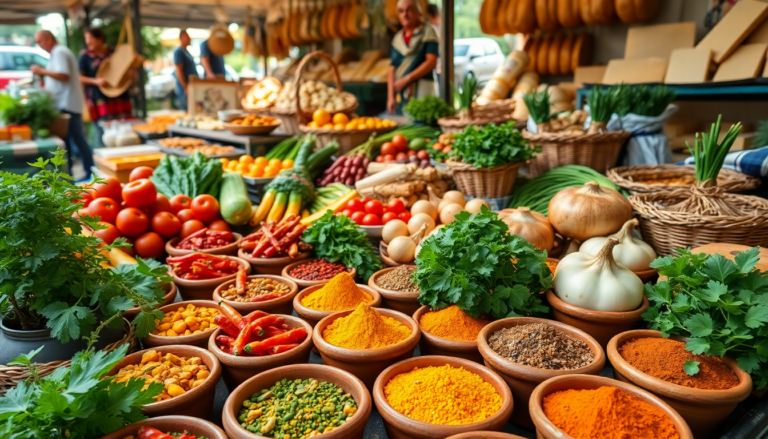Argomenti trattati
Imagine the aroma of spices wafting through the air, each scent telling a tale of distant lands and cultures. The beauty of global cuisine lies not just in its flavors but also in the stories behind every dish. Each ingredient carries history, tradition, and a connection to the earth, inviting us to explore the world through taste. Have you ever thought about what’s on your plate beyond just the flavor?
The Essence of Ingredients
Behind every dish, there exists a narrative woven from the very essence of its ingredients. Take, for instance, the rich, earthy tones of miso, a staple in Japanese cooking that has been crafted for over a thousand years. This fermented soybean paste embodies umami—a savory taste that resonates deeply on the palate, evoking a sense of warmth and comfort. It holds within it the artisanal craftsmanship from generations of Japanese chefs who have perfected the fermentation process, transforming simple soybeans into a complex flavor profile that enhances soups, marinades, and even desserts. Isn’t it fascinating how a single ingredient can tell such a profound story?
Similarly, the vibrant colors and bold flavors of Mexican cuisine tell the story of its diverse terroir. Ingredients like corn, jalapeños, and avocados are not merely components; they represent a commitment to sustainability and local sourcing. The tradition of nixtamalization, where corn is treated with lime to improve its nutritional value and flavor, is a testament to the ingenuity of ancient civilizations and their deep connection to the land. Each bite of a freshly made tortilla is a celebration of this rich heritage, connecting the eater to the very soil from which the ingredients sprang. Can you taste the history in every mouthful?
Techniques That Transform
As a chef, I have learned that technique is as critical as the ingredients themselves. The art of cooking is about transformation—taking raw elements and elevating them into something extraordinary. Techniques such as sous-vide cooking, where food is vacuum-sealed and submerged in a water bath at precise temperatures, allow for incredible control over texture and flavor. This method, popularized in modern gastronomy, eliminates guesswork and brings out the pure essence of each ingredient, maintaining moisture and enhancing taste. Have you ever wondered how chefs achieve that perfect texture?
Moreover, the act of fermentation is a magical process that transforms flavors and textures, creating depth and complexity. From sauerkraut to kimchi, the power of fermentation not only preserves food but also enriches our palates with tangy, umami-rich profiles that are both satisfying and healthful. Each fermented dish carries with it a unique story of time, patience, and cultural significance, bridging the gap between past and present. Isn’t it incredible how something so simple can yield such complex flavors?
Culinary Traditions and Sustainability
The connection between cuisine and culture is undeniable. Each dish is a reflection of its surroundings, shaped by the local climate, available resources, and the ingenuity of its people. As we venture into the world of gastronomy, it is essential to embrace sustainable practices that honor these traditions. By supporting local farmers and artisans, we not only ensure the freshest ingredients but also keep culinary heritage alive. What if our choices in food could make a difference in the world?
In Italy, for example, the concept of ‘filiera corta’—short supply chain—encourages consumers to seek out local produce and meats, fostering a sense of community and responsibility toward our planet. The flavors of a Caprese salad, with its fresh mozzarella, basil, and ripe tomatoes, become even more vibrant when sourced from nearby farms. Each bite is not just a taste of Italy but an experience of its landscape and traditions. Can you feel the connection to the land with every fresh bite?
As you embark on your culinary adventures, remember that behind every plate lies a story waiting to be discovered. Whether it’s the warmth of homemade pasta or the zest of a tropical fruit, these experiences invite us to savor not just the flavors but the rich tapestry of human culture and history. What stories will your next meal tell?

